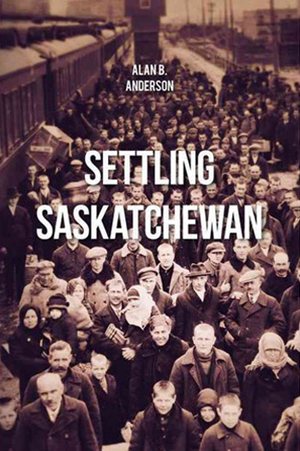Settling Saskatchewan

Support Canada's History in other ways (more)
by Alan B. Anderson
University of Regina Press, Regina, 2013 495 pp., $39.95 paperback
One of the most compelling things about this book is its cover. It’s a picture of a crowd of newly arrived immigrants at a train station in winter, all looking up towards the camera. Their faces, some smiling, some stoic, some framed by old country babushkas, tell countless stories of hardship and hope.
Unfortunately, this is the book’s only illustration. The rest is an academic exploration of “ethnic bloc settlement” — group settlement by people sharing the same ethnic background, language, and religion — in Saskatchewan. The writer explains how and why these communities were formed, and what became of them.
Settling Saskatchewan starts with the first European settlers — the British. The Saskatoon Temperance Colony, as its name suggests, was for sober Methodists. Cannington Manor, established in 1882, was for English aristocrats, businessmen, and landowners — cricket, fox hunting, and gala balls were established routines for this small, isolated colony. Members of the Barr Colony arrived wearing their finest clothes but were ill-equipped for sod-busting.
Around the same time came waves of German-speaking newcomers — such as Mennonites and Hutterites — as well as Scandinavians. This was followed by the arrival of Poles, Ukrainians, and other Eastern Europeans. Not surprisingly, they had more problems with acceptance than the English cricket players. Anderson writes that Eastern Europeans were driven like cattle and abused by immigration agents. French-speaking people — Métis or francophone immigrants from Quebec, Europe, or the United States — also established robust communities. This patchwork of different communities made Saskatchewan
into the culturally diverse province it is today.
This is a fact-filled book, somewhat encyclopedic in scope, but including enough fascinating tidbits to absorb an interested reader.
— Nelle Oosterom (Read bio)
Nelle Oosterom is the Senior Editor of Canada's History magazine.